Transport
French National Police use several modes of transport, each with their distinct advantages and disadvantages.
A bulk carrier BW Fjord
An Air France A380 on approach to Washington Dulles International Airport
| Part of a series on |
| Transport |
|---|
| Modes |
| Topics |
Transport infrastructure consists of the fixed installations including roads, railways, airways, waterways, canals and pipelines and terminals such as airports, railway stations, bus stations, warehouses, trucking terminals, refueling depots (including fueling docks and fuel stations) and seaports. Terminals may be used both for interchange of passengers and cargo and for maintenance.
Vehicles traveling on these networks may include automobiles, bicycles, buses, trains, trucks, people, helicopters, watercraft, spacecraft and aircraft.
Operations deal with the way the vehicles are operated, and the procedures set for this purpose including financing, legalities, and policies. In the transport industry, operations and ownership of infrastructure can be either public or private, depending on the country and mode.
Passenger transport may be public, where operators provide scheduled services, or private. Freight transport has become focused on containerization, although bulk transport is used for large volumes of durable items. Transport plays an important part in economic growth and globalization, but most types cause air pollution and use large amounts of land. While it is heavily subsidized by governments, good planning of transport is essential to make traffic flow and restrain urban sprawl.
Contents
History
Bronocice pot with the earliest known image of a wheeled vehicle in the world, found in Poland
The first forms of road transport involved animals, such as horses (domesticated in the 4th or 3rd millennium BCE), oxen (from about 8000 BCE)[1] or humans carrying goods over dirt tracks that often followed game trails. Many early civilizations, including Mesopotamia and the Indus Valley Civilization, constructed paved roads. In classical antiquity, the Persian and Roman empires built stone-paved roads to allow armies to travel quickly. Deep roadbeds of crushed stone underneath kept such roads dry. The medieval Caliphate later built tar-paved roads. The first watercraft were canoes cut out from tree trunks. Early water transport was accomplished with ships that were either rowed or used the wind for propulsion, or a combination of the two. The importance of water has led to most cities that grew up as sites for trading being located on rivers or on the sea-shore, often at the intersection of two bodies of water. Until the Industrial Revolution, transport remained slow and costly, and production and consumption gravitated as close to each other as feasible.
The Wright brothers' first flight in 1903
With the development of the combustion engine and the automobile around 1900, road transport became more competitive again, and mechanical private transport originated. The first "modern" highways were constructed during the 19th century[citation needed] with macadam. Later, tarmac and concrete became the dominant paving materials. In 1903 the Wright brothers demonstrated the first successful controllable airplane, and after World War I (1914–1918) aircraft became a fast way to transport people and express goods over long distances.[2]
After World War II (1939–1945) the automobile and airlines took higher shares of transport, reducing rail and water to freight and short-haul passenger services.[3] Scientific spaceflight began in the 1950s, with rapid growth until the 1970s, when interest dwindled. In the 1950s the introduction of containerization gave massive efficiency gains in freight transport, fostering globalization.[4] International air travel became much more accessible in the 1960s with the commercialization of the jet engine. Along with the growth in automobiles and motorways, rail and water transport declined in relative importance. After the introduction of the Shinkansen in Japan in 1964, high-speed rail in Asia and Europe started attracting passengers on long-haul routes away from airlines.[3]
Early in U.S. history,[when?] private joint-stock corporations owned most aqueducts, bridges, canals, railroads, roads, and tunnels. Most such transportation infrastructure came under government control in the late 19th and early 20th centuries, culminating in the nationalization of inter-city passenger rail-service with the establishment of Amtrak. Recently,[when?] however, a movement to privatize roads and other infrastructure has gained some[quantify] ground and adherents.[5]
Mode
A mode of transport is a solution that makes use of a particular type of vehicle, infrastructure, and operation. The transport of a person or of cargo may involve one mode or several of the modes, with the latter case being called intermodal or multimodal transport. Each mode has its own advantages and disadvantages, and will be chosen for a trip on the basis of cost, capability, and route.Human-powered
Human-powered transport remains common in developing countries.
Although humans are able to walk without infrastructure, the transport can be enhanced through the use of roads, especially when using the human power with vehicles, such as bicycles and inline skates. Human-powered vehicles have also been developed for difficult environments, such as snow and water, by watercraft rowing and skiing; even the air can be entered with human-powered aircraft.
Animal-powered
Animal-powered transport is the use of working animals for the movement of people and commodities. Humans may ride some of the animals directly, use them as pack animals for carrying goods, or harness them, alone or in teams, to pull sleds or wheeled vehicles.Air
Two things necessary for aircraft are air flow over the wings for lift and an area for landing. The majority of aircraft also need an airport with the infrastructure to receive maintenance, restocking, refueling and for the loading and unloading of crew, cargo, and passengers. While the vast majority of aircraft land and take off on land, some are capable of take-off and landing on ice, snow, and calm water.
The aircraft is the second fastest method of transport, after the rocket. Commercial jets can reach up to 955 kilometres per hour (593 mph), single-engine aircraft 555 kilometres per hour (345 mph). Aviation is able to quickly transport people and limited amounts of cargo over longer distances, but incurs high costs and energy use; for short distances or in inaccessible places helicopters can be used.[6] As of April 28, 2009, The Guardian article notes that, "the WHO estimates that up to 500,000 people are on planes at any time."[7]
Land
Land transport covers all land-based transportation systems that provide for the movement of people, goods and services. Land transport plays a vital role in linking communities to each other. Land transport is a key factor in urban planning. It consists of 2 kinds, rail and road.Rail
InterCityExpress, a German high-speed passenger train
The New York City Subway is the world's largest rapid transit system by length of routes and by number of stations.
A train consists of one or more connected vehicles that operate on the rails. Propulsion is commonly provided by a locomotive, that hauls a series of unpowered cars, that can carry passengers or freight. The locomotive can be powered by steam, diesel or by electricity supplied by trackside systems. Alternatively, some or all the cars can be powered, known as a multiple unit. Also, a train can be powered by horses, cables, gravity, pneumatics and gas turbines. Railed vehicles move with much less friction than rubber tires on paved roads, making trains more energy efficient, though not as efficient as ships.
Intercity trains are long-haul services connecting cities;[8] modern high-speed rail is capable of speeds up to 350 km/h (220 mph), but this requires specially built track. Regional and commuter trains feed cities from suburbs and surrounding areas, while intra-urban transport is performed by high-capacity tramways and rapid transits, often making up the backbone of a city's public transport. Freight trains traditionally used box cars, requiring manual loading and unloading of the cargo. Since the 1960s, container trains have become the dominant solution for general freight, while large quantities of bulk are transported by dedicated trains.
Road
The Harbor Freeway is often heavily congested at rush hour in Downtown Los Angeles.
The most common road vehicle is the automobile; a wheeled passenger vehicle that carries its own motor. Other users of roads include buses, trucks, motorcycles, bicycles and pedestrians. As of 2010, there were 1.015 billion automobiles worldwide. Road transport offers a complete freedom to road users to transfer the vehicle from one lane to the other and from one road to another according to the need and convenience. This flexibility of changes in location, direction, speed, and timings of travel is not available to other modes of transport. It is possible to provide door to door service only by road transport.
Automobiles provide high flexibility with low capacity, but require high energy and area use, and are the main source of noise and air pollution in cities; buses allow for more efficient travel at the cost of reduced flexibility.[13] Road transport by truck is often the initial and final stage of freight transport.
Water
Automobile ferry in Croatia
In the 19th century, the first steam ships were developed, using a steam engine to drive a paddle wheel or propeller to move the ship. The steam was produced in a boiler using wood or coal and fed through a steam external combustion engine. Now most ships have an internal combustion engine using a slightly refined type of petroleum called bunker fuel. Some ships, such as submarines, use nuclear power to produce the steam. Recreational or educational craft still use wind power, while some smaller craft use internal combustion engines to drive one or more propellers, or in the case of jet boats, an inboard water jet. In shallow draft areas, hovercraft are propelled by large pusher-prop fans. (See Marine propulsion.)
Although it is slow compared to other transportation, modern sea transport is a highly efficient method of transporting large quantities of goods. Commercial vessels, nearly 35,000 in number, carried 7.4 billion tons of cargo in 2007.[14] Transport by water is significantly less costly than air transport for transcontinental shipping;[15] short sea shipping and ferries remain viable in coastal areas.[16][17]
Other modes
Pipeline transport sends goods through a pipe; most commonly liquid and gases are sent, but pneumatic tubes can also send solid capsules using compressed air. For liquids/gases, any chemically stable liquid or gas can be sent through a pipeline. Short-distance systems exist for sewage, slurry, water and beer, while long-distance networks are used for petroleum and natural gas.Cable transport is a broad mode where vehicles are pulled by cables instead of an internal power source. It is most commonly used at steep gradient. Typical solutions include aerial tramway, elevators, escalator and ski lifts; some of these are also categorized as conveyor transport.
Spaceflight is transport out of Earth's atmosphere into outer space by means of a spacecraft. While large amounts of research have gone into technology, it is rarely used except to put satellites into orbit, and conduct scientific experiments. However, man has landed on the moon, and probes have been sent to all the planets of the Solar System.
Suborbital spaceflight is the fastest of the existing and planned transport systems from a place on Earth to a distant "other place" on Earth. Faster transport could be achieved through part of a low Earth orbit, or following that trajectory even faster using the propulsion of the rocket to steer it.
Elements
Infrastructure
Bridges, such as Golden Gate Bridge, allow roads and railways to cross bodies of water.
Terminals such as airports, ports, and stations, are locations where passengers and freight can be transferred from one vehicle or mode to another. For passenger transport, terminals are integrating different modes to allow riders, who are interchanging between modes, to take advantage of each mode's benefits. For instance, airport rail links connect airports to the city centers and suburbs. The terminals for automobiles are parking lots, while buses and coaches can operate from simple stops.[18] For freight, terminals act as transshipment points, though some cargo is transported directly from the point of production to the point of use.
The financing of infrastructure can either be public or private. Transport is often a natural monopoly and a necessity for the public; roads, and in some countries railways and airports are funded through taxation. New infrastructure projects can have high costs and are often financed through debt. Many infrastructure owners, therefore, impose usage fees, such as landing fees at airports, or toll plazas on roads. Independent of this, authorities may impose taxes on the purchase or use of vehicles. Because of poor forecasting and overestimation of passenger numbers by planners, there is frequently a benefits shortfall for transport infrastructure projects.[19]
Vehicles
A Fiat Uno in 2008
Vehicles are most commonly staffed by a driver. However, some systems, such as people movers and some rapid transits, are fully automated. For passenger transport, the vehicle must have a compartment, seat, or platform for the passengers. Simple vehicles, such as automobiles, bicycles or simple aircraft, may have one of the passengers as a driver.
Operation
Incheon International Airport, South Korea
Functions
Relocation of travelers and cargo are the most common uses of transport. However, other uses exist, such as the strategic and tactical relocation of armed forces during warfare, or the civilian mobility construction or emergency equipment.Passenger
Passenger transport, or travel, is divided into public and private transport. Public transport is scheduled services on fixed routes, while private is vehicles that provide ad hoc services at the riders desire. The latter offers better flexibility, but has lower capacity, and a higher environmental impact. Travel may be as part of daily commuting, for business, leisure or migration.Short-haul transport is dominated by the automobile and mass transit. The latter consists of buses in rural and small cities, supplemented with commuter rail, trams and rapid transit in larger cities. Long-haul transport involves the use of the automobile, trains, coaches and aircraft, the last of which have become predominantly used for the longest, including intercontinental, travel. Intermodal passenger transport is where a journey is performed through the use of several modes of transport; since all human transport normally starts and ends with walking, all passenger transport can be considered intermodal. Public transport may also involve the intermediate change of vehicle, within or across modes, at a transport hub, such as a bus or railway station.
Taxis and buses can be found on both ends of the public transport spectrum. Buses are the cheaper mode of transport but are not necessarily flexible, and taxis are very flexible but more expensive. In the middle is demand-responsive transport, offering flexibility whilst remaining affordable.
International travel may be restricted for some individuals due to legislation and visa requirements.
Medical transport
An ambulance from World War I
Air medical services is a comprehensive term covering the use of air transportation to move patients to and from healthcare facilities and accident scenes. Personnel provide comprehensive prehospital and emergency and critical care to all types of patients during aeromedical evacuation or rescue operations, aboard helicopters, propeller aircraft, or jet aircraft.[23][24]
Freight
Freight transport, or shipping, is a key in the value chain in manufacturing.[25] With increased specialization and globalization, production is being located further away from consumption, rapidly increasing the demand for transport.[26] Transportation creates place utility by moving the goods from the place of production to the place of consumption. While all modes of transport are used for cargo transport, there is high differentiation between the nature of the cargo transport, in which mode is chosen.[27] Logistics refers to the entire process of transferring products from producer to consumer, including storage, transport, transshipment, warehousing, material-handling, and packaging, with associated exchange of information.[28] Incoterm deals with the handling of payment and responsibility of risk during transport.[29]Bulk transport is common with cargo that can be handled roughly without deterioration; typical examples are ore, coal, cereals and petroleum. Because of the uniformity of the product, mechanical handling can allow enormous quantities to be handled quickly and efficiently. The low value of the cargo combined with high volume also means that economies of scale become essential in transport, and gigantic ships and whole trains are commonly used to transport bulk. Liquid products with sufficient volume may also be transported by pipeline.
Air freight has become more common for products of high value; while less than one percent of world transport by volume is by airline, it amounts to forty percent of the value. Time has become especially important in regards to principles such as postponement and just-in-time within the value chain, resulting in a high willingness to pay for quick delivery of key components or items of high value-to-weight ratio.[30] In addition to mail, common items sent by air include electronics and fashion clothing.
Impact
Economic
Transport is a key component of growth and globalization, such as in Seattle, Washington, United States.
Due to the way modern cities and communities are planned and operated, a physical distinction between home and work is usually created, forcing people to transport themselves to places of work, study, or leisure, as well as to temporarily relocate for other daily activities. Passenger transport is also the essence of tourism, a major part of recreational transport. Commerce requires the transport of people to conduct business, either to allow face-to-face communication for important decisions or to move specialists from their regular place of work to sites where they are needed.
Planning
Transport planning allows for high utilization and less impact regarding new infrastructure. Using models of transport forecasting, planners are able to predict future transport patterns. On the operative level, logistics allows owners of cargo to plan transport as part of the supply chain. Transport as a field is also studied through transport economics, a component for the creation of regulation policy by authorities. Transport engineering, a sub-discipline of civil engineering, must take into account trip generation, trip distribution, mode choice and route assignment, while the operative level is handled through traffic engineering.
The engineering of this roundabout in Bristol, United Kingdom, attempts to make traffic flow free-moving.
Too much infrastructure and too much smoothing for maximum vehicle throughput means that in many cities there is too much traffic and many—if not all—of the negative impacts that come with it. It is only in recent years that traditional practices have started to be questioned in many places, and as a result of new types of analysis which bring in a much broader range of skills than those traditionally relied on—spanning such areas as environmental impact analysis, public health, sociologists as well as economists—the viability of the old mobility solutions is increasingly being questioned.
Environment
Traffic congestion persists in São Paulo, Brazil, despite the no-drive days based on license numbers.
Other environmental impacts of transport systems include traffic congestion and automobile-oriented urban sprawl, which can consume natural habitat and agricultural lands. By reducing transportation emissions globally, it is predicted that there will be significant positive effects on Earth's air quality, acid rain, smog and climate change.[37]
See also
- Environmental impact of aviation
- Fuel efficiency in transportation
- IEEE Intelligent Transportation Systems Society
- List of emerging transportation technologies
- Journal of Transport and Land Use
- Outline of transport
- Public transport
- Rail transport by country
- Speed record
- Taxicabs by country
- Transportation engineering
- Wikipedia Books: Transport
References
[...] tamed aurochs became the first domestic oxen. The earliest evidence for domestication is found in the Middle East around ten thousand years ago.
- Environment Canada. "Transportation". Archived from the original on July 13, 2007. Retrieved 30 July 2008.
Bibliography
- Bardi, Edward; John Coyle & Robert Novack (2006). Management of Transportation. Thomson South-Western. ISBN 0-324-31443-4.
- Chopra, Sunil & Peter Meindl (2007). Supply Chain Management. Pearson. ISBN 0-13-208608-5.
- Christopher P. Cooper; Rebecca Shepherd (1998). Tourism: Principles and Practice. Financial Times Prent.Int. ISBN 978-0-582-31273-9. Retrieved 22 December 2012.
- Lay, Maxwell G (1992). Ways of the World: A History of the World's Roads and of the Vehicles that Used Them. Rutgers University Press. ISBN 0-8135-2691-4.
- Stopford, Martin (1997). Maritime Economics. London: Routledge. ISBN 0-415-15310-7.
External links
| Wikimedia Commons has media related to Transport. |
| Look up transport or transportation in Wiktionary, the free dictionary. |
| Wikiquote has quotations related to: Transport |
| Wikivoyage has travel related information for Transportation. |
- Transportation from UCB Libraries GovPubs
- Transportation at Curlie (based on DMOZ)
- America On the Move An online transportation exhibition from the National Museum of American History, Smithsonian Institution
- World Transportation Organization The world transportation organization (The Non-Profit Advisory Organization)
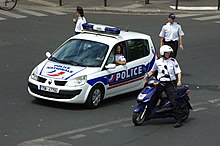



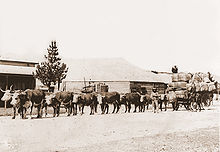


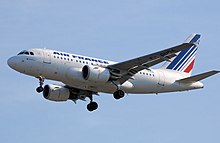
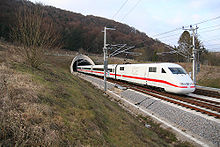



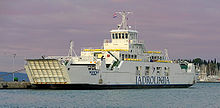
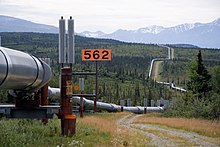
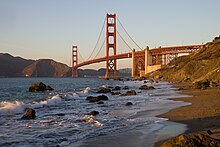





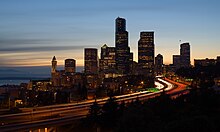
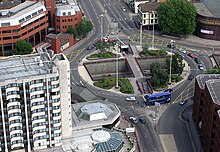
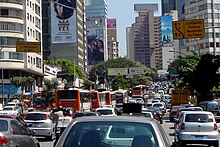
Comments
Post a Comment